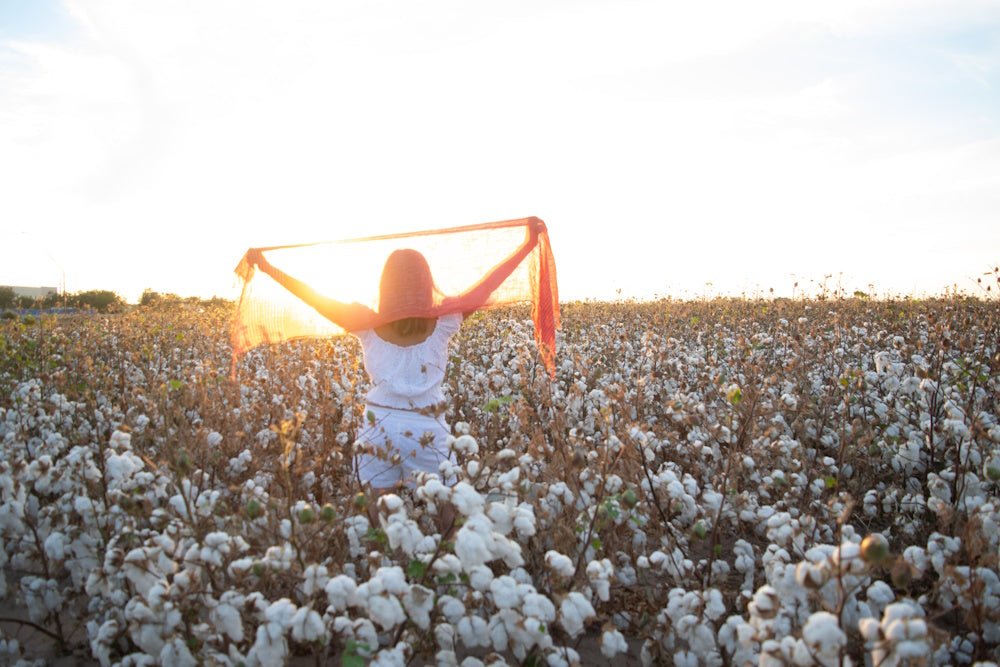Organic cotton, often associated with eco-friendly fashion, has gained notable attention for its softer touch and hypoallergenic properties. In this discourse, we dive into the advantages of using organic cotton, especially concerning skin health. But, what really makes organic cotton stand out, and why should you consider it for your wardrobe and beyond? Let's unravel the intricate fabric of this topic, stitching together insights on its benefits over conventional cotton.
Table of Contents:
- What is Organic Cotton?
- Chemical-Free Growth: A Skin-Safe Option
- Hypoallergenic Properties of Organic Cotton
- The Comfort Factor: Softness and Breathability
- Environmental Impacts of Organic Cotton
- Expert Opinions on Organic Cotton
- Durability and Maintenance of Organic Cotton
- Case Studies: Real-World Impact
- Comparison with Other Sustainable Materials
- The Rise in Demand for Organic Cotton
- Future Predictions for Organic Cotton Production
- Practical Applications and Fashion Trends
- Conclusion: The Weave of Benefits
- What is Organic Cotton?
- Organic cotton comes from plants that have not been genetically modified and are grown without synthetic agricultural chemicals such as fertilizers or pesticides. This textile variant is championed not just for its contribution to a healthier planet, but significantly for its skin-friendly nature.
Chemical-Free Growth: A Skin-Safe Option
The elimination of harsh chemicals in the cultivation of organic cotton results in a fabric that’s free from chemical residues. Source: Greater Good Eco reveals that these conventional chemicals can lead to skin irritation and even more severe health issues like allergies and respiratory problems . By opting for organic cotton, you minimize exposure to these harmful substances.
Hypoallergenic Properties of Organic Cotton
For those with sensitive skin, organic cotton could be a game changer. As highlighted by Source: Sockrates Custom, this material is renowned for being hypoallergenic, making it an optimal choice for allergy sufferers . Unlike synthetic fibers or chemically treated cotton, organic cotton reduces the risk of allergic reactions.
The Comfort Factor: Softness and Breathability
It's not just about what's absent; it's also about what's inherently present—comfort. Organic cotton boasts superior softness and breathability. The absence of chemical processing means organic fibers are retained in their natural, softer form. Source: Burrow and Be notes the fabric’s ability to regulate body temperature, making it suitable for both hot and cold climates .
Environmental Impacts of Organic Cotton
One cannot explore the benefits of organic cotton without acknowledging its environmental impact. Traditional cotton farming is a pollutant, responsible for a significant percentage of the world's pesticide use. By contrast, organic cotton farming fosters biodiversity and reduces soil and water pollution. According to Source: The Butterfly Mother, it accounts for significantly fewer chemical releases .
Expert Opinions on Organic Cotton
The narrative on organic cotton isn't complete without academic and field expert insights. Health practitioners often cite organic cotton’s role in preventing dermatitis and other irritations. Notably, its natural cultivation process is safer for the health of farmers, reducing their risk of exposure to toxins.
Durability and Maintenance of Organic Cotton
Interestingly, organic cotton is not just about initial comfort but long-term wear. Source: Caslay confirms that garments made from organic cotton can withstand more washing cycles, maintaining their softness and durability . With care instructions savored in simplicity, maintaining organic clothing doesn’t demand an arduous routine.
Case Studies: Real-World Impact
Practical examples abound, showcasing real-world results from using organic cotton. Many parents transitioning their babies to organic cotton clothing observe reduced incidences of rashes. These real-world scenarios validate the claims surrounding its hypoallergenic and gentle properties .
Comparison with Other Sustainable Materials
When comparing organic cotton with other sustainable materials like bamboo or recycled polyester, it holds its own in skin-friendliness and environmental impact. While bamboo is known for its antimicrobial properties, organic cotton wins in being widely acceptable for sensitive skin.
The Rise in Demand for Organic Cotton
As consumer awareness grows, so does the demand for organic textiles. Touted as an indicator of environmental consciousness, organic cotton is seeing a surge in global market share. This trend not only supports a move towards sustainable fashion but also reflects broader consumer health priorities.
Future Predictions for Organic Cotton Production
In future scenarios, advancements in organic cotton production could revolutionize the textile industry. Innovations such as biodegradable pesticides and improved irrigation techniques promise to make production even more sustainable. These developments will push towards a new epoch where 'organic' is the norm.
Practical Applications and Fashion Trends
From everyday wear to luxury fashion brands, organic cotton is making its mark. Designers are increasingly using organic materials to cater to the eco-savvy consumer, encouraging a trend that values sustainability without compromising style.
Conclusion: The Weave of Benefits
In conclusion, the narrative woven around organic cotton reveals a multitude of advantages, particularly for skin health and the environment. As we've discussed, its hypoallergenic nature, absence of harmful chemicals, and comforting softness make organic cotton an ideal choice. With growing consumer interest, it seems the embrace of organic fabric may not only shape wardrobes but also contribute to a healthier planet.
In our juxtaposition with conventional cotton, the benefits of going organic are resounding. As this trend continues to gain momentum, it encourages not just individual well-being but a collective stride towards ecological preservation. Consider this your weaving guide into the world of soothing fabrics, where every fiber connects you to a greener and gentler future.

